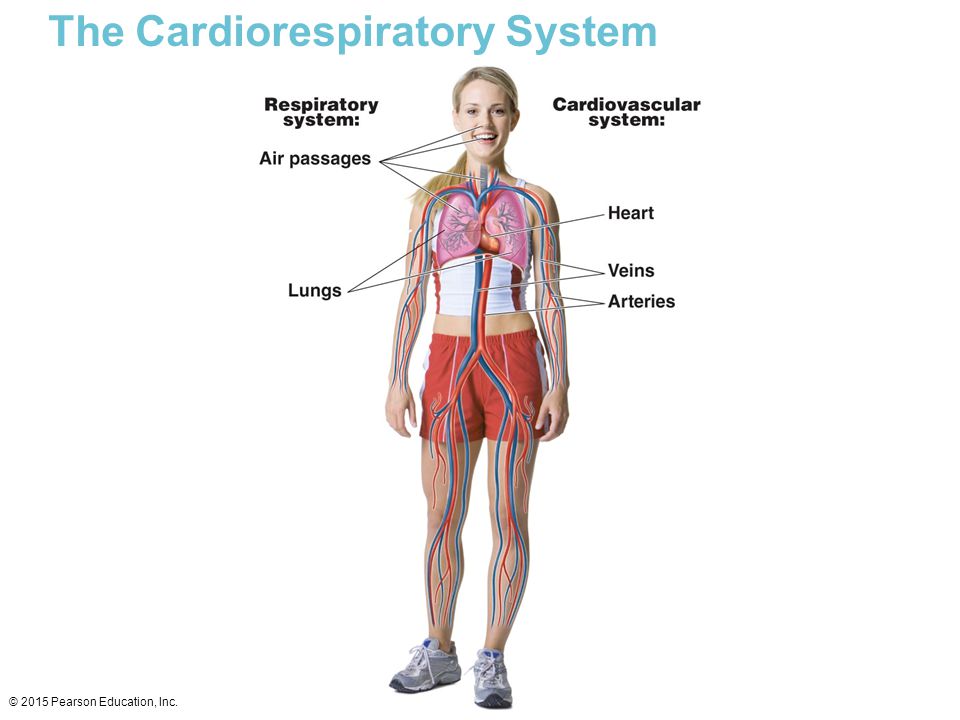Nursing Paper Example on Phenylketonuria [SOLVED]
Phenylketonuria (PKU) stands as a metabolic disorder with significant implications for those affected. This condition, if left untreated, can lead to severe cognitive impairment and other health complications. Understanding its causes, signs, and treatments is crucial in managing and mitigating its effects. PKU arises from a deficiency in the enzyme phenylalanine hydroxylase (PAH), responsible for metabolizing the amino acid phenylalanine, and it results from genetic mutations inherited in an autosomal recessive pattern. Pathognomonic signs include intellectual disability, developmental delays, seizures, and behavioral problems. Diagnosis involves newborn screening through blood tests, with treatment primarily focusing on a phenylalanine-restricted diet supplemented with medical foods low in phenylalanine. Patient education plays a pivotal role in managing PKU, emphasizing adherence to dietary restrictions and regular monitoring to minimize complications and optimize outcomes. (Nursing Paper Example on Phenylketonuria [SOLVED])
![Nursing Paper Example on Phenylketonuria [SOLVED]](https://hcpbreastfeeding.com/sites/default/files/2021-08/pku-iStock-1253264012.jpg)
Causes
Phenylketonuria (PKU) results from a deficiency in the enzyme phenylalanine hydroxylase (PAH), a crucial component in the metabolism of the amino acid phenylalanine. This deficiency stems from genetic mutations affecting the PAH gene, which is inherited in an autosomal recessive pattern.
In individuals with PKU, these genetic mutations disrupt the normal functioning of the PAH enzyme, impairing its ability to convert phenylalanine into tyrosine, another amino acid essential for various physiological processes. As a consequence, phenylalanine accumulates in the body, reaching elevated levels in the blood and tissues.
The underlying genetic mutations causing PKU typically involve alterations in the PAH gene located on chromosome 12q24.1. These mutations can range from point mutations, deletions, insertions, or splice site abnormalities, all of which interfere with the enzyme’s catalytic activity or stability.
The autosomal recessive pattern of inheritance means that an individual must inherit two defective copies of the PAH gene, one from each parent, to manifest the disorder. Carriers of a single mutated copy of the PAH gene typically do not exhibit symptoms of PKU but can pass the defective gene to their offspring.
Given the recessive nature of the inheritance pattern, individuals with PKU often have unaffected parents who carry one copy of the mutated gene. However, when both parents are carriers, there is a 25% chance with each pregnancy of having a child with PKU, a 50% chance of the child being a carrier like the parents, and a 25% chance of the child inheriting two normal copies of the gene.
This intricate interplay of genetic factors underscores the importance of genetic counseling and screening to assess the risk of PKU in families with a history of the disorder or carriers. (Nursing Paper Example on Phenylketonuria [SOLVED])
Signs and Symptoms
Phenylketonuria (PKU) presents with a spectrum of signs and symptoms that can vary in severity among affected individuals. One pathognomonic sign of PKU is intellectual disability, which can range from mild to profound, depending on factors such as the degree of phenylalanine restriction and early intervention.
Developmental delays are common manifestations of PKU, affecting various aspects of growth and maturation, including motor skills, language acquisition, and social interactions. These delays may become apparent during infancy or early childhood and often persist into adulthood without appropriate management.
Seizures represent another significant symptom of untreated PKU, occurring in a subset of affected individuals due to disruptions in brain function resulting from elevated phenylalanine levels. These seizures can vary in frequency and severity and may require anticonvulsant medications for control.
Behavioral problems are prevalent among individuals with PKU and can manifest as hyperactivity, impulsivity, attention deficits, and emotional dysregulation. These behavioral challenges can significantly impact daily functioning and quality of life if not addressed through comprehensive management strategies.
Additionally, individuals with PKU may exhibit physical signs such as a musty odor in the breath, resulting from the accumulation of phenylalanine-derived metabolites. Skin rashes and eczema are also common dermatological manifestations of untreated PKU, stemming from metabolic imbalances and nutrient deficiencies.
Furthermore, lighter skin and hair pigmentation may be observed in individuals with PKU, attributed to disruptions in melanin synthesis and distribution secondary to elevated phenylalanine levels.
Recognizing these signs and symptoms is crucial for early detection and intervention, as timely diagnosis and treatment can mitigate the risk of cognitive impairment and other complications associated with PKU. Regular monitoring and adherence to dietary restrictions are essential for optimizing outcomes and improving the long-term prognosis for individuals with this metabolic disorder. (Nursing Paper Example on Phenylketonuria [SOLVED])
![Nursing Paper Example on Phenylketonuria [SOLVED]](https://www.netmeds.com/images/cms/magefan_blog/nmslite/1666942253_Phenylketonuria_480x180.jpg)
Etiology
The etiology of Phenylketonuria (PKU) lies in genetic mutations affecting the phenylalanine hydroxylase (PAH) gene, located on chromosome 12q24.1. These mutations disrupt the normal function of the PAH enzyme, crucial for converting phenylalanine into tyrosine, an essential amino acid involved in various physiological processes.
The PAH gene encodes instructions for producing the PAH enzyme, which plays a critical role in phenylalanine metabolism. When functioning correctly, the PAH enzyme facilitates the conversion of phenylalanine to tyrosine, preventing the accumulation of phenylalanine in the body.
However, mutations in the PAH gene can impair the enzyme’s catalytic activity or stability, leading to reduced or absent PAH function. As a result, phenylalanine accumulates in the bloodstream and tissues, reaching elevated levels that are toxic to the central nervous system.
The autosomal recessive pattern of inheritance characterizes PKU, meaning that affected individuals inherit two mutated copies of the PAH gene, one from each parent. Carriers of a single mutated copy of the PAH gene typically do not exhibit symptoms of PKU but can pass the defective gene to their offspring.
The spectrum of mutations causing PKU is diverse, ranging from point mutations, deletions, insertions, to splice site abnormalities within the PAH gene. These mutations can occur spontaneously or be inherited from carrier parents with a family history of the disorder.
Understanding the genetic basis of PKU is crucial for genetic counseling and prenatal diagnosis in families at risk of having children with the condition. Advances in molecular genetics have enabled the identification of specific mutations in the PAH gene, allowing for more accurate diagnosis and personalized management approaches for individuals with PKU. Continued research into the etiology of PKU holds promise for developing novel therapeutic interventions and improving outcomes for affected individuals. (Nursing Paper Example on Phenylketonuria [SOLVED])
Pathophysiology
The pathophysiology of Phenylketonuria (PKU) revolves around the toxic effects of elevated phenylalanine levels on the central nervous system and other organ systems.
In individuals with PKU, the deficiency of the enzyme phenylalanine hydroxylase (PAH) leads to impaired conversion of phenylalanine to tyrosine. Consequently, phenylalanine accumulates in the bloodstream and tissues, reaching concentrations that exceed the normal physiological range.
Elevated phenylalanine levels pose a particular risk to the developing brain, as phenylalanine competes with other amino acids, such as tryptophan, for transport across the blood-brain barrier. This competition results in reduced uptake of essential neurotransmitter precursors, leading to neurotransmitter imbalances and disruptions in neuronal function.
Excessive phenylalanine levels also promote the accumulation of toxic byproducts, such as phenylpyruvate and phenylacetate, which further contribute to neurotoxicity and oxidative stress within the brain. These metabolites interfere with cellular metabolism and signaling pathways, impairing neuronal growth, myelination, and synaptic transmission.
The neurotoxic effects of elevated phenylalanine levels manifest as abnormalities in brain development and function, resulting in cognitive impairment, intellectual disability, and behavioral disturbances.
Furthermore, disruptions in neurotransmitter synthesis and function contribute to the neurological manifestations of PKU, including seizures, movement disorders, and psychiatric symptoms.
Beyond the central nervous system, elevated phenylalanine levels can impact other organ systems, such as the liver, kidneys, and skin. Metabolic imbalances and accumulation of toxic metabolites may lead to hepatic dysfunction, renal impairment, and dermatological manifestations, including skin rashes and eczema.
The pathophysiology of PKU underscores the importance of early diagnosis and intervention to prevent irreversible neurological damage and optimize long-term outcomes for affected individuals. Comprehensive management strategies aimed at reducing phenylalanine levels and mitigating neurotoxicity are essential for minimizing the impact of PKU on cognitive function and overall health. (Nursing Paper Example on Phenylketonuria [SOLVED])
DSM-5 Diagnosis
The Diagnostic and Statistical Manual of Mental Disorders, Fifth Edition (DSM-5), provides criteria for diagnosing Phenylketonuria (PKU) as a neurodevelopmental disorder. Diagnosis typically begins with newborn screening, which involves collecting a blood sample from the infant’s heel shortly after birth to measure phenylalanine levels.
Elevated phenylalanine levels detected through newborn screening prompt further confirmatory testing, such as quantitative analysis of phenylalanine levels in blood plasma. A diagnosis of PKU is established when blood phenylalanine concentrations exceed the established threshold for the disorder, typically ranging from 2 to 10 times higher than normal levels.
In addition to biochemical testing, genetic analysis may be performed to identify mutations in the phenylalanine hydroxylase (PAH) gene, confirming the underlying genetic cause of PKU. Molecular genetic testing can provide valuable information about the specific mutations present in affected individuals, which may inform prognosis and guide personalized treatment approaches.
The DSM-5 criteria for PKU diagnosis include the presence of intellectual disability or developmental delays attributable to elevated phenylalanine levels. These cognitive impairments must be evident in early childhood and significantly impair adaptive functioning across multiple domains, such as communication, self-care, and social interaction.
Furthermore, PKU diagnosis requires evidence of biochemical abnormalities consistent with impaired phenylalanine metabolism, such as elevated phenylalanine levels in blood plasma and decreased levels of tyrosine. Neurological symptoms, such as seizures, movement disorders, or behavioral disturbances, may also support the diagnosis of PKU, particularly in individuals with untreated or poorly managed disease.
The DSM-5 diagnosis of PKU emphasizes the importance of integrating clinical, biochemical, and genetic information to accurately identify affected individuals and initiate appropriate management strategies to optimize outcomes and quality of life. (Nursing Paper Example on Phenylketonuria [SOLVED])
Treatment Regimens and Patient Education
Management of Phenylketonuria (PKU) revolves around dietary restrictions, medical interventions, and comprehensive patient education to optimize outcomes and minimize complications associated with elevated phenylalanine levels.
Central to PKU management is adherence to a phenylalanine-restricted diet, which aims to minimize the intake of phenylalanine-containing foods while ensuring adequate nutrition and growth. This diet typically involves the consumption of specialized medical foods low in phenylalanine, such as phenylalanine-free infant formula for newborns and young children and protein substitutes for older individuals.
Regular monitoring of blood phenylalanine levels is essential to adjust dietary phenylalanine intake and optimize metabolic control. Individuals with PKU undergo frequent blood tests to assess phenylalanine levels and evaluate dietary compliance, with the goal of maintaining phenylalanine concentrations within the target range to prevent neurotoxicity and cognitive impairment.
In addition to dietary management, some individuals with PKU may benefit from adjunctive therapies to enhance phenylalanine metabolism and reduce phenylalanine levels. Sapropterin dihydrochloride, a synthetic form of tetrahydrobiopterin, can increase the activity of residual phenylalanine hydroxylase enzyme in certain individuals with responsive mutations, allowing for higher phenylalanine tolerance and relaxation of dietary restrictions.
Patient education plays a crucial role in empowering individuals with PKU and their caregivers to effectively manage the condition and navigate the challenges associated with dietary restrictions. Education should focus on understanding the principles of the phenylalanine-restricted diet, including food selection, portion control, and meal planning strategies to ensure adequate nutrition while minimizing phenylalanine intake.
Furthermore, education about the signs and symptoms of phenylalanine toxicity is essential to recognize early warning signs of metabolic decompensation and seek prompt medical attention when necessary. Individuals with PKU and their caregivers should be knowledgeable about emergency protocols for managing acute metabolic crises, such as hyperphenylalaninemia or phenylalanine intoxication, including the administration of emergency medical foods and contacting healthcare providers.
Ongoing support and counseling are integral components of PKU management, providing individuals and families with emotional support, resources, and practical strategies to cope with the challenges of living with a chronic metabolic disorder. Multidisciplinary care teams, including metabolic specialists, dietitians, psychologists, and social workers, collaborate to provide comprehensive care tailored to the individual needs of each patient with PKU. Through proactive management and patient-centered education, individuals with PKU can achieve optimal health outcomes and lead fulfilling lives while managing the complexities of their condition. (Nursing Paper Example on Phenylketonuria [SOLVED])
Conclusion
Phenylketonuria (PKU) represents a complex metabolic disorder with significant implications for affected individuals and their families. By understanding its causes, signs, and treatments, we can better manage and mitigate its effects. The pathophysiology of PKU underscores the importance of early diagnosis and intervention to prevent irreversible neurological damage. Diagnostic criteria outlined in the DSM-5 emphasize the integration of clinical, biochemical, and genetic information to accurately identify affected individuals. Treatment regimens focus on dietary restrictions, supplemented by medical interventions such as sapropterin dihydrochloride, to optimize metabolic control and minimize complications. Patient education plays a crucial role in empowering individuals and caregivers to effectively manage PKU and navigate the challenges associated with dietary restrictions. Through comprehensive management strategies and ongoing support from multidisciplinary care teams, individuals with PKU can achieve optimal health outcomes and lead fulfilling lives while managing the complexities of their condition. (Nursing Paper Example on Phenylketonuria [SOLVED])
References
https://www.ncbi.nlm.nih.gov/books/NBK535378/









![Nursing Paper Example on Phenylketonuria [SOLVED]](https://hcpbreastfeeding.com/sites/default/files/2021-08/pku-iStock-1253264012.jpg)
![Nursing Paper Example on Phenylketonuria [SOLVED]](https://www.netmeds.com/images/cms/magefan_blog/nmslite/1666942253_Phenylketonuria_480x180.jpg)
![Nursing Paper Example on Pertussis [SOLVED]](https://vaccinenation.org/wp-content/uploads/2024/03/Heading-2024-03-08T102549.205-1080x675.png?crop=1)
![Nursing Paper Example on Pertussis [SOLVED]](https://outbreaknewstoday.com/wp-content/uploads/2019/05/Untitled-13.png)
![Nursing Paper Example on Pertussis [SOLVED]](https://d2jx2rerrg6sh3.cloudfront.net/image-handler/picture/2019/6/shutterstock_1057236131.jpg)
![Nursing Paper Example on Periodontal Disease [SOLVED]](https://www.hudsondentalcenter.com/wp-content/uploads/2018/02/Periodontal-Disease-West-New-York.png.webp)
![Nursing Paper Example on Periodontal Disease [SOLVED]](https://www.manusdental.com/wp-content/uploads/2019/08/gum-disease-graphic-min.jpg)
![Nursing Paper Example on Peritonitis [SOLVED]](https://magnetosur.com/wp-content/uploads/2021/12/Tratamiento-de-la-peritonitis.jpg)
